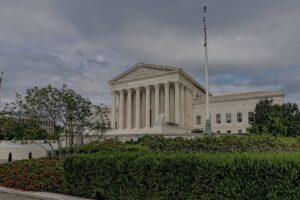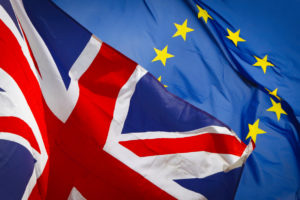The “revolving door” is not just a department store– or hotel-entry challenge for the unwary. The phrase is also a metaphor for the shuttling of lawyers back and forth between government service and the private sector, which has long captured the attention of courts[1] and commentators.[2] The rules that have been adopted seek to balance various interests. On the one hand, where a lawyer’s successive clients are a government entity and a private client, there is a risk that the power vested in public authority might be co-opted for the special benefit of a private client, allowing the latter to secure an unfair advantage because of access (through the lawyer) to confidential information about an adversary obtainable only by dint of the lawyer’s government service. On the other hand, rules governing lawyers currently or previously employed by a government agency should not be so restrictive as to inhibit changing employment, lest the government’s ability to attract qualified lawyers be adversely affected.[3]
Among the provisions of the Model Rules of Professional Conduct (“Model Rules”) dealing with conflicts of interest, Model Rule 1.11 has garnered the least attention. Seeking to redress that situation, a recent ABA ethics opinion, ABA Formal Opinion 509 (“Formal Op. 509”), provides some useful discussion of the Rule.[4]
Under the old Model Code of Professional Responsibility (“Model Code”), DR 9-109(B)(1) forbade a lawyer from “accept[ing] private employment in a matter in which he had substantial responsibility while he was a public employee.”[5] That ukase now inhabits Model Rule 1.11(a), which prohibits a former government lawyer from representing “a private client in connection with a matter in which the lawyer participated personally and substantially” while in government employ. Note that one court has held that the prohibition applies even when the lawyer takes the same position in private practice as during government service: “[T]he prohibitions of Rule 1.11 are not limited to side-switching. . . .”[6]
As an earlier ethics opinion concluded, Model Rule 1.11(a) supersedes the general “former client” conflict provisions of Model Rule 1.9(a) when it comes to former government lawyers.[7] When a lawyer is disqualified under paragraph (a), paragraph (b) extends the prohibition to others in the same firm unless the disqualified lawyer is screened[8] from the matter, the disqualified lawyer receives no part of the fees, and written notice is given to the appropriate government office in order to ascertain compliance.
Model Rule 1.11 goes even further, however, and, like its Model Code predecessor (DR 9-109(B)(2)), articulates the conflict of interest principles applicable to a former government lawyer who, even though not having substantial responsibility in the course of that employment for a matter involving a person adverse to a client the lawyer (now in private practice) is representing, did acquire confidential information about that person. These principles are contained in Model Rule 1.11(c), and are the subject of the recent Formal Op. 509.
It is, of course, axiomatic in legal ethics that a lawyer who has gained important information about a person (natural or juridical) in the course of a representation (whether in government service, private practice, or otherwise) should not use that information against that person if the lawyer should change sides. Barring an exception, Model Rules 1.6(a) (confidentiality of information relating to representation of a client), 1.8(b) (specific applications of conflicts relating to current clients), and 1.9(c) (duties to former clients) prohibit a lawyer, without the client’s informed consent, from revealing or using to the client’s detriment any information obtained during the course of the representation.
Model Rule 1.11(c): Confidential Government Information
Model Rule 1.11 addresses the potential for misuse of “confidential government information.” That phrase is defined in the middle of Model Rule 1.11(c) as “information that has been obtained under governmental authority and which, at the time this Rule is applied, the government is prohibited by law from disclosing to the public or has a legal privilege not to disclose and which is not otherwise available to the public.” The remaining—substantive—part of that paragraph provides:
Except as law may otherwise expressly permit, a lawyer having information that the lawyer knows is confidential government information about a person acquired when the lawyer was a public officer or employee, may not represent a private client whose interests are adverse to that person in a matter in which the information could be used to the material disadvantage of that person. . . . A firm with which that lawyer is associated may undertake or continue representation in the matter only if the disqualified lawyer is timely screened from any participation in the matter and is apportioned no part of the fee therefrom.
Several things about this language are noteworthy:
- First, unlike paragraphs (a) and (b) of Model Rule 1.11, which apply only to lawyers who have “formerly” served as a public officer or government employee (and subject them to the requirements of Model Rule 1.9(c)), paragraph (c) does not have that qualification and thus sweeps more broadly. In that regard, as Formal Op. 509 notes, paragraph (d) of the rule applies only to current government officers and employees and subjects them to the conflict regimes of Model Rules 1.7 (conflicts relating to current clients) and 1.9 (duties to former clients), as well as additional restrictions on participation in a matter and negotiation for private employment.
- Second, the lawyer must “know” the information is “confidential government information.” Recall that Model Rule 1.0, the Terminology section of the Model Rules, defines know to mean only “actual knowledge.”[9] However, Model Rule 1.11(c)’s prohibition encompasses information that “could be” used to the detriment of the person to whom it pertains.[10]
- Third, paragraph (c) proscribes use of information that could be a “material disadvantage.”[11] Contrast this with the language of Model Rule 1.8(b), which forbids using information relating to the representation of a client to the “disadvantage”—not “material disadvantage”—of the client. Formal Op. 509 does not explore this distinction.
- Fourth, as the opinion points out, conflicts under paragraph (c), in contrast to the other paragraphs of Model Rule 1.11, are not waivable by client consent.[12] This statement is not based on anything in the plain language of paragraph (c) but, presumably, arises by negative inference from the express acknowledgment in Model Rules 1.6, 1.7, 1.8, and 1.9 of waiver by client consent and the absence of such language in Model Rule 1.11(c).
- Finally, unlike confidential government information, the term private client is undefined either in Model Rule 1.11 itself or in the Terminology section of the Model Rules. As discussed further below, Formal Op. 509 undertook to define this term.
The breadth of the Model Rule’s prohibition is betokened by the phrase acquired when the lawyer was a public officer or employee, which suggests that the rule applies regardless of whether a lawyer in public service worked in a representational capacity when acquiring the information.[13] In other words, confidential government information reaches much more information than confidential information within the meaning of Model Rule 1.6; the latter applies only to information a lawyer obtains while representing a client, but the former can encompass information obtained from a variety of sources, including law enforcement.
Nevertheless, Model Rule 1.11(c) does not apply to all government information, and not even to all government information that would normally be considered confidential, but only to
- information “obtained under governmental authority,” which would include information pursuant to grand jury subpoena, an agency subpoena, a search warrant, etc.;
- information covered by a legal nondisclosure privilege or subject to an express legal prohibition against disclosure, in both cases as of the moment the rule is applied; and
- information that is “not otherwise available to the public” (which implies that information disclosable—but not yet disclosed—pursuant to a federal or state Freedom of Information Act or similar statute would be exempt).[14]
Key Takeaways from Formal Op. 509
Formal Op. 509 seeks to clarify several points under Model Rule 1.11.
To begin with, the opinion considers whether paragraph (c) applies to former government employees (including lawyers previously employed by the government but in a nonrepresentational capacity), current employees, or both. The conclusion that both categories are covered emerges from a straightforward textual comparison of the various paragraphs of the rule. Paragraphs (a) and (b) apply to former government lawyers, while paragraph (d) applies only to current government lawyers. In contrast, paragraph (c) is not specific but simply focuses generally on “a lawyer having information that the lawyer knows is confidential government information.” That lack of specification, the opinion concludes, means that paragraph (c) applies to both current and former government lawyers. Furthermore, from a policy perspective, the need to protect against misuse of confidential government information is equally compelling with respect to both former and current government lawyers.
Moreover, according to Formal Op. 509, whether information is considered available to the public (hence, outside the definition of confidential government information) and whether it could be used to a person’s material disadvantage are questions of fact specific to each situation.
Finally, Formal Op. 509 endeavors to define the term private client as used in the rule. The term is ambiguous, in that the word private could refer to (A) any client of a lawyer in private practice, regardless of whether the client is a private or public person or entity; (B) a client that is a private person or entity; or (C) both (A) and (B). Relying on a 1970s ethics opinion interpreting the predecessor DR 9-109,[15] the opinion concludes that option (A) must be true, so the question boils down to whether option (B) is also true. Finding that it is, Formal Op. 509 concludes that option (C) is correct: private client includes not only clients that are private persons/entities and private persons/entities a lawyer represents in private practice but also public persons/entities a lawyer represents in private practice,[16] except in the situation where the public entity is legally entitled to use the confidential information, in which event applying the strictures of the rule would make no sense.[17]
See, e.g., Woods v. Covington Cty. Bank, 537 F.2d 804 (5th Cir. 1976). ↑
See, e.g., Irving R. Kaufman, The Former Government Attorney and the Canons of Professional Ethics, 70 Harv. L. Rev. 657 (1957); H. Richard Uviller, The Virtuous Prosecutor in Quest of an Ethical Standard: Guidance from the ABA, 71 Mich. L. Rev. 1145 (1973); Developments in the Law: Conflicts of Interest in the Legal Profession, 94 Harv. L. Rev. 1244 (1981); Douglas R. Richmond, As the Revolving Door Turns: Government Lawyers Entering or Returning to Private Practice and Conflicts of Interest, 65 St. Louis U. L.J. 325, 350 (2021). ↑
See Barnes ex rel. Est. of Barnes v. Dist. of Columbia, 266 F. Supp. 2d 138, 141 (D.D.C. 2003). ↑
ABA Comm. on Ethics & Pro. Responsibility, Formal Op. 509 (2024) [hereinafter Formal Op. 509]. ↑
Cf. Canons of Professional Ethics, Canon 36 (Am. Bar Ass’n 1908) (“A lawyer, having once held public office or having been in the public employ, should not after his retirement accept employment in connection with any matter which he has investigated or passed upon while in such office or employ.”). ↑
In re White, 11 A.3d 1226, 1249 (D.C. 2011). ↑
See ABA Comm. on Ethics & Pro. Responsibility, Formal Op. 409 (1997). ↑
Screen[ing] is defined in the Terminology section of the Model Rules as “isolation of a lawyer from any participation in a matter through the timely imposition of procedures within a firm that are reasonably adequate under the circumstances to protect information that the isolated lawyer is obligated to protect under these Rules or other law.” Model Rules of Pro. Conduct r. 1.0(k) (Am. Bar Ass’n 2024). ↑
Id. r. 1.0(f) (emphasis added); see id. r. 1.11, cmt. [8] (emphasis added). ↑
Id. r. 1.11(c) (emphasis added). ↑
Id. (emphasis added). ↑
Formal Op. 509, supra note 4, at 6 n.24. ↑
Formal Op. 509 provides this example: A lawyer who is also a police officer is a “public officer” within the meaning of Model Rule 1.11(c). Id. at 2. ↑
Cited as an analogy in Formal Op. 509 is the definition of nonpublic information in 5 C.F.R. § 2635.703(b): information that an employee obtains due to federal employment and that he knows or reasonably should know “(1) Is routinely exempt from disclosure under 5 U.S.C. 552 or is protected from disclosure by statute, Executive order or regulation; (2) Is designated as confidential by an agency; or (3) has not actually been disseminated to the general public and is not authorized to be made available to the public on request.” Formal Op. 509, supra note 4, at 4 n.13. ↑
ABA Comm. on Ethics & Pro. Responsibility, Formal Op. 342 (1975) (concluding that the term private employment in DR 9-109(B) refers to employment as a private practitioner). ↑
Formal Op. 509, supra note 4, at 9 (citing Gen. Motors Corp. v. City of New York, 501 F.2d 639 (2d Cir. 1974) (holding that a former Antitrust Division lawyer in private practice who had worked on an antitrust suit against General Motors (“GM”) was ineligible to represent New York City in litigation against GM)). ↑
Id. at 8–9, 9 n.30. ↑

















